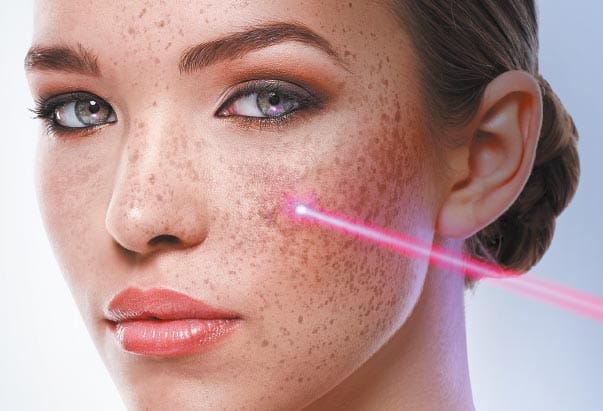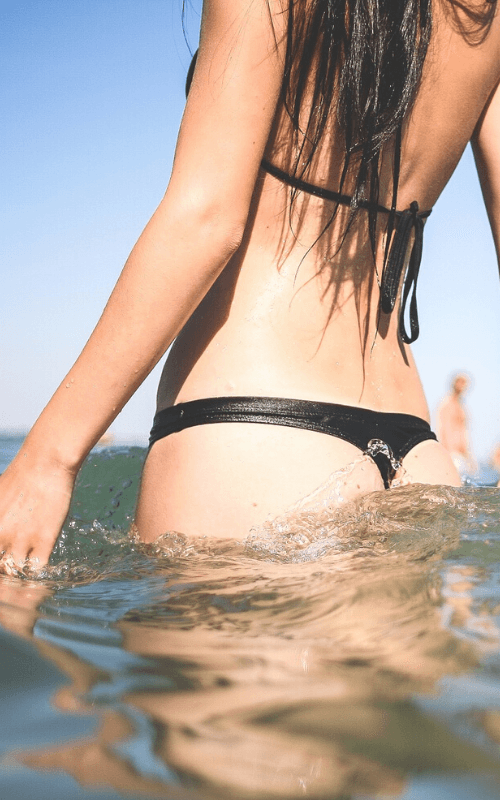Choosing the right laser for tattoo removal or skin treatment is not simple. Patients often ask whether PicoSure or PicoWay gives better results. Both are advanced picosecond lasers, but they work differently. This guide compares them side by side and explains why PicoWay is often the better choice for tattoos, pigmentation, and darker skin types.
What Is a Picosecond Laser and Why Does It Matter?
A picosecond laser delivers energy in trillionths of a second. The pulse is so fast that pigment is shattered mechanically rather than burned by heat. The body then clears pigment naturally.
Clinical studies in Lasers in Surgery and Medicine report up to 75% tattoo clearance in half the sessions compared to older nanosecond lasers. This makes picosecond lasers safer and more effective for tattoos, pigmentation, and acne scars.
Technology Deep-Dive: PicoWay vs PicoSure – How Do They Work?
| Feature | PicoWay | PicoSure |
|---|---|---|
| Pain Level | Mild | Mild to moderate discomfort |
| Session Length | 15–25 minutes on average | 15–30 minutes |
| Redness/Swelling | Minimal — subsides within a few hours | Noticeable for 24–48 hours |
| Downtime | Little to none — same-day recovery typical | 2–3 days before full recovery |
| Blister Risk | Slightly lower due to less heat buildup | Slightly higher with heat-based energy |
Power
PicoWay produces a higher peak power because it packs energy into shorter pulses. Think of it as hitting the pigment particles with a sharper hammer. This is excellent for dense or stubborn ink.
PicoSure uses slightly longer pulses but compensates with a unique lens array that focuses energy into microscopic zones. This makes it exceptional for collagen stimulation and skin texture treatments.
Wavelength
PicoWay has four wavelength options, which means it can target more tattoo ink colors and deeper pigmentation layers. It’s good for all skin types.
PicoSure mainly uses 755 nm, which is ideal for black, blue, and brown pigment but less effective for red or green inks.
Pulse Duration
Shorter pulses mean less heat. PicoWay’s ultra-short pulses are ideal for heat-sensitive conditions like melasma.
PicoSure’s longer pulses introduce mild thermal energy, which is helpful for collagen remodeling but can be tricky for darker skin if not adjusted properly.
Why Wavelengths and Pulse Speed Are a Big Deal
Pigment particles have different sizes and absorb light at different wavelengths. A device with multiple wavelengths offers more flexibility. Pulse speed affects whether energy causes pure mechanical shattering (safer) or adds thermal effects (risk of hyperpigmentation).
PicoWay vs PicoSure: Which One Is Best for Tattoo Removal?
PicoWay clears tattoos faster. Its four wavelengths target all ink colors, including difficult reds and greens. With higher peak power, it breaks ink into smaller fragments that the body clears efficiently.
Clinical data shows ~75% clearance in 4 sessions for multicolor tattoos with PicoWay.
PicoSure works well for black and blue tattoos but may need 6–10 sessions for colorful or dense designs.
For full tattoo clearance, PicoWay is usually the better option.
PicoWay vs PicoSure for Pigmentation & Melasma
Melasma is one of the most difficult skin conditions to treat. Heat can make it worse, which is why device choice is critical.
PicoWay uses ultra-short pulses that minimize heat, making it safer for melasma and post-inflammatory hyperpigmentation. It is often recommended for darker skin tones because the risk of rebound pigmentation is lower.
PicoSure works very well for sunspots, freckles, and age spots, particularly in lighter skin. Its thermal effect can help even out skin tone but requires caution in patients with Fitzpatrick skin type IV or higher.
A review in Dermatologic Surgery showed PicoWay treatments produced significant melasma improvement after just 3 sessions, with low recurrence rates over 6 months.
PicoWay vs PicoSure for Acne Scars, Dark Spots & Skin Texture
Both lasers improve skin texture and acne scars by triggering laser-induced optical breakdown (LIOB), which stimulates collagen and elastin production.
- PicoWay: Ultra-short pulses mean less heat. This makes it safer for melasma and darker skin where heat can trigger rebound pigmentation.
- PicoSure: Effective for freckles, sunspots, and age spots in lighter skin, but riskier for patients with Fitzpatrick IV–VI skin types.
A review in Dermatologic Surgery showed PicoWay improved melasma after 3 sessions with minimal recurrence.
Skin Glow & Wrinkle Reduction: Which One Feels More Like a Refresh?
If your main goal is glowing, refreshed skin, PicoSure may be the more satisfying option.
Patients often call it a “lunchtime facial” because there is little downtime and a visible boost in skin brightness. Its collagen stimulation continues for weeks, improving fine lines and overall smoothness.
PicoWay can also enhance skin texture, but its primary role is pigment clearance. The glow effect may not be as noticeable after the first session compared to PicoSure.
What You’ll Feel: Pain, Session Time, and Recovery
Neither device is particularly painful, especially with numbing cream.
| Experience | PicoWay | PicoSure |
|---|---|---|
| Pain Level | Mild to moderate | Mild |
| Session Length | 15–30 minutes | 15–30 minutes |
| Redness/Swelling | 24–48 hours | Few hours |
| Downtime | 1–2 days | Same-day recovery possible |
| Blister Risk | Slightly lower | Slightly higher |
Patients usually describe the sensation as a quick snap of a rubber band.
Why PicoWay Leads: Pure Photoacoustic Energy vs PressureWave™
PicoWay uses ultra-short picosecond pulses that deliver pure photoacoustic energy. It shatters pigment with pressure rather than heat, which lowers the risk of post-inflammatory hyperpigmentation and keeps downtime minimal. It typically clears multi-color tattoos efficiently and suits a wide range of skin tones, including darker skin.
PicoSure uses PressureWave™ (photoacoustic + photothermal). It can boost skin glow and collagen, but the added heat means you usually need more caution on darker skin and more sessions to clear complex, multi-color tattoos.
In short, PicoWay clears pigment faster and more safely for most skin tones, especially for multicolor tattoos, because it delivers pure photoacoustic energy with minimal heat.
Ask the Experts at Healthpoint Cosmetic and Laser Clinic: Which One Is Better?
Both lasers are advanced and effective, but PicoWay offers more versatility, faster clearance, and safety across all skin tones. For tattoos, melasma, or darker skin, PicoWay is usually the better choice. PicoSure remains valuable for quick glow and collagen boost.
Take the first step towards healthier, glowing skin today by booking your appointment with us!





